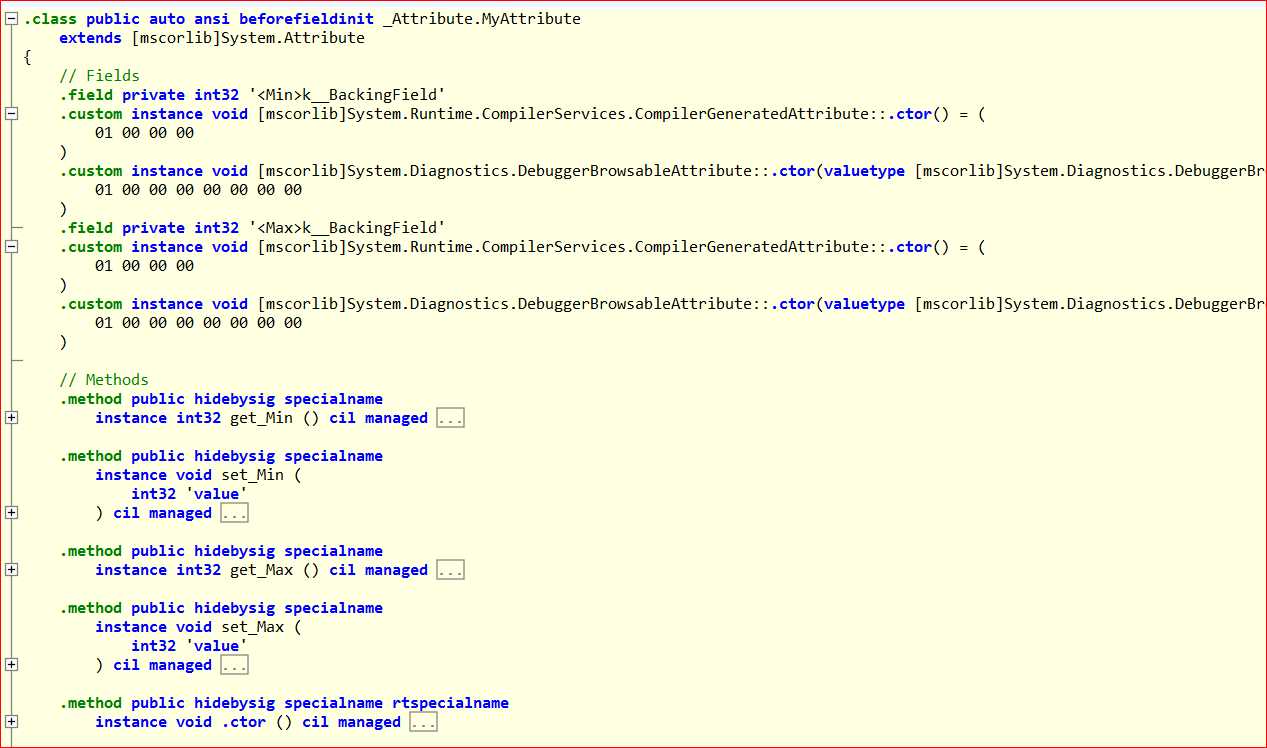标签:反编译 识别 prope OLE 做了 var 范围 for get
---恢复内容开始---
特性在我们平时编码过程中是随处可见的 向MVC中的Required非空属性验证特性 序列化和反序列化特性等等 我们在字段上标记这些特性 再引用上其中的类库 就会有相应的功能 其实在这过程中 框架为我们做了一些中间处理过程 下面我们就一起来看看究竟什么是特性 它究竟是如何工作的
1.声明特性
public class MyAttribute : Attribute { public int Min { get; set; } public int Max { get; set; } public MyAttribute() { } public MyAttribute(int min, int max) { this.Min = min; this.Max = max; } }
特性声明一般以Attribute结尾,因为以Attribute结尾一眼就能识别出是特性类 还有必须继承特性Attribute
2.特性的本质
从上面的代码可以看出特性的本质其实就是类class
反编译结果中也可以看出

3.特性的使用
public class MyAttribute : Attribute { public int Min { get; set; } public int Max { get; set; } public MyAttribute() { } public MyAttribute(int min, int max) { this.Min = min; this.Max = max; } public bool Validate(Person person) { if (person.Age >= this.Min && person.Age <= this.Max) { Console.WriteLine("年龄不合法"); return true; } else { return false; } } } public class Person { //规定年龄范围 18-50 [MyAttribute(18,50)] public int Age { get; set; } public void Print() { Console.WriteLine(this.Age.ToString()); } } public static class Validate { public static bool ValidatePerson(this Person p) { Type type = p.GetType(); foreach (var prop in type.GetProperties()) { if (prop.IsDefined(typeof(MyAttribute))) { MyAttribute myAttribute=(MyAttribute)prop.GetCustomAttribute(typeof(MyAttribute)); if (myAttribute.Validate(p)) { Console.WriteLine("验证正确"); } else { Console.WriteLine("验证错误"); return false; } } } return true; } }
Person person = new Person() { Age=10}; person.ValidatePerson();
标签:反编译 识别 prope OLE 做了 var 范围 for get
原文地址:https://www.cnblogs.com/hzpblogs/p/10279705.html